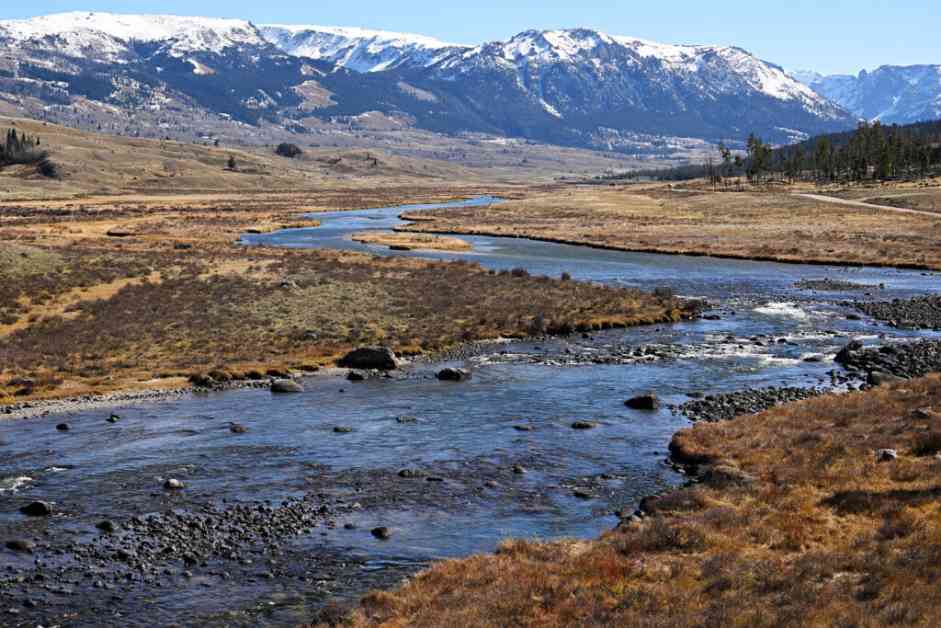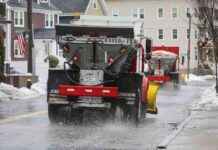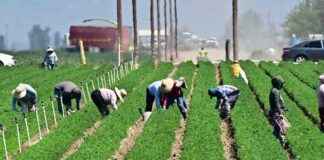In Cheyenne, Wyoming, the northernmost city getting Colorado River water, the state engineer and attorney general’s offices had a chat with legislators on the select water committee last week. The topic? Ongoing Colorado River negotiations. The bottom line: Wyoming needs to adjust to a future where the river won’t have enough water for everyone.
Brandon Gebhart, Wyoming’s state engineer in charge of managing and regulating the state’s water, and Chris Brown, from the Wyoming attorney general’s water and natural resources division, gave the committee a rundown on the Colorado River negotiations. They explained why it’s crucial for Wyoming to create its own water conservation laws.
With many Colorado River basin mountain ranges having less than 50 percent of their average spring snowpack, it’s pretty obvious that the river and its reservoirs will be under strain again this year due to a worsening drought.
“We don’t have anything set up right now,” said Gebhart. “But I think it’s very important that if we’re to do that, we need to do it in a way that doesn’t impact our water users, and it’s something that Wyoming can live with.”
Southwest Wyoming relies on water from the Green River, the Colorado River’s largest tributary, to support agricultural operations, provide for its towns, and fuel its industries. But as the prolonged drought in the West worsens with climate change, and demand for water exceeds the river’s capacity, the Colorado River is dwindling, putting at risk the water supplies and livelihoods of millions of people across seven U.S. states, 30 tribes, and Mexico.
To address the river shortages and predicted drought, states and tribes have come up with new plans on how to manage the river before an October 2026 deadline. Both the Upper Basin states—Colorado, New Mexico, Utah, and Wyoming—and the Lower Basin states—Arizona, California, and Nevada—have suggested reducing basin-wide use by up to 3.9 million acre-feet.
However, the basins haven’t been able to agree on how to distribute these cuts. The Upper Basin states proposed imposing the full 3.9 million acre-feet of required cuts on the Lower Basin based on decreases in elevation at Lake Mead. Under this plan, the Lower Basin would start cutting its water use incrementally once Lake Mead drops to 90 percent of its capacity, plateauing at 1.5 million acre-feet when the lake reaches 70 percent capacity. The Lower Basin would then make additional cuts of 2.4 million acre-feet when Lake Mead falls below 20 percent capacity.
On the other hand, the Lower Basin states offered to reduce their water consumption by 1.5 million acre-feet once the Lake Mead water level hits 69 percent of its capacity. The remaining 2.4 million acre-feet of cuts would be triggered when the system reaches 23 percent capacity and be shared equally between the basins.
Gebhert, Wyoming’s representative in Colorado River negotiations, emphasized the importance of a voluntary program of cuts to showcase the viability of the Upper Basin states’ plan and demonstrate to the Lower Basin that they can contribute to the solution.
It’s still uncertain what a voluntary water conservation program in Wyoming would entail, but it would have to consider various interests. Ranchers, who hold senior water rights in the Green River basin and use the most water, would need to be balanced with the needs of communities like Rock Springs and Green River and industries like mining for trona, a mineral used in glass, paper, and detergent manufacturing.
As the state engineer’s office works on drafting a pilot program, they must take into account the impacts of voluntary water use cutbacks on landscapes and ecosystems that have historically relied on specific irrigation practices. The pilot program would likely affect urban and industrial water users in the Green River basin, not just agricultural users.
Wyoming, according to Chris Brown, a senior assistant attorney general, is lagging behind other Upper Basin states like New Mexico and Utah in developing a voluntary water conservation program.
In 2023, Utah passed a law requiring water conservancy districts and larger water utilities to submit conservation plans and update them every five years. New Mexico offers water conservation resources to homeowners, industrial users, landscapers, and public utilities.
The select water committee authorized the state engineer’s office to draft legislation for a pilot conservation program. Lawmakers will review the draft in their next meeting in August at a location to be determined.














